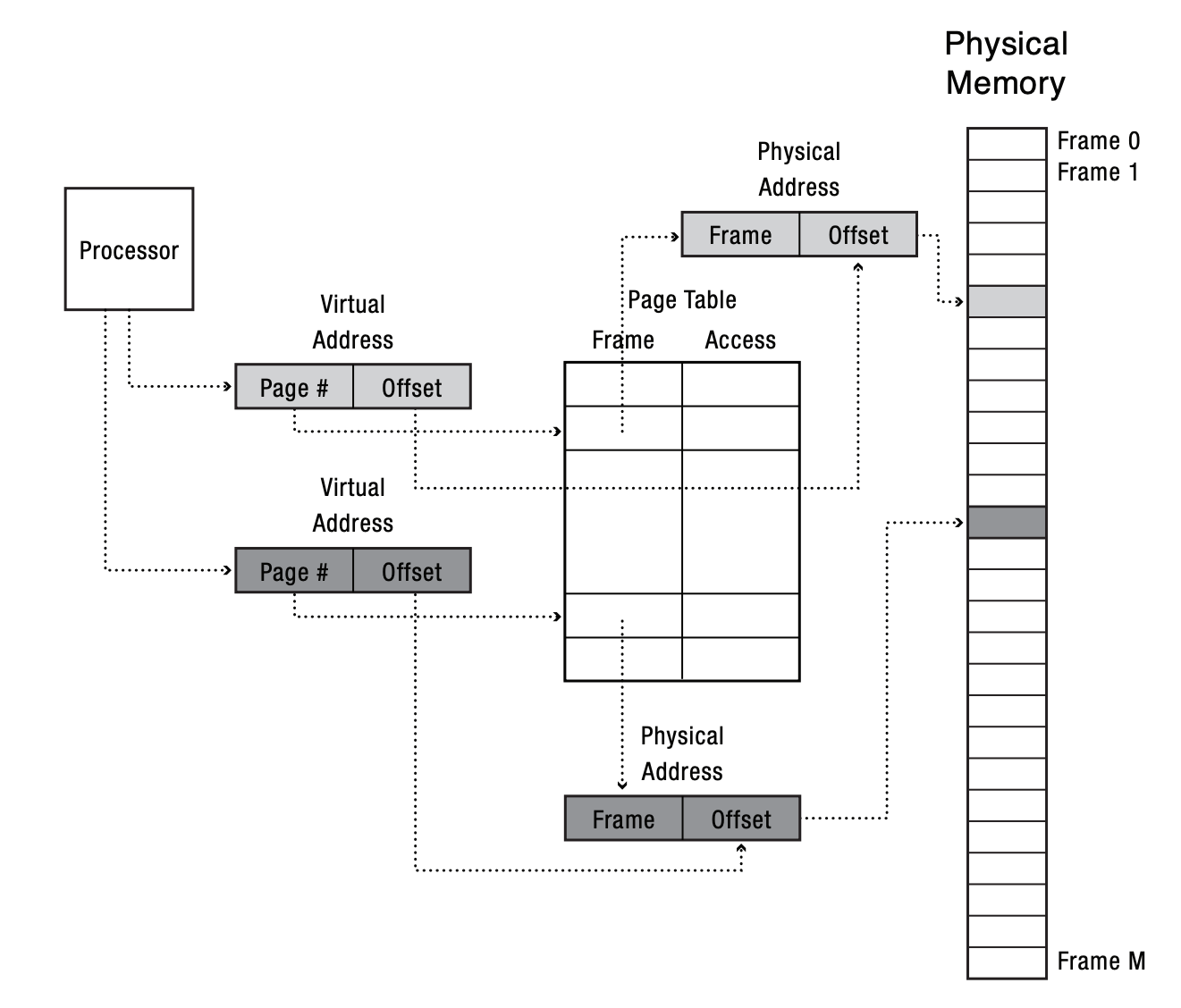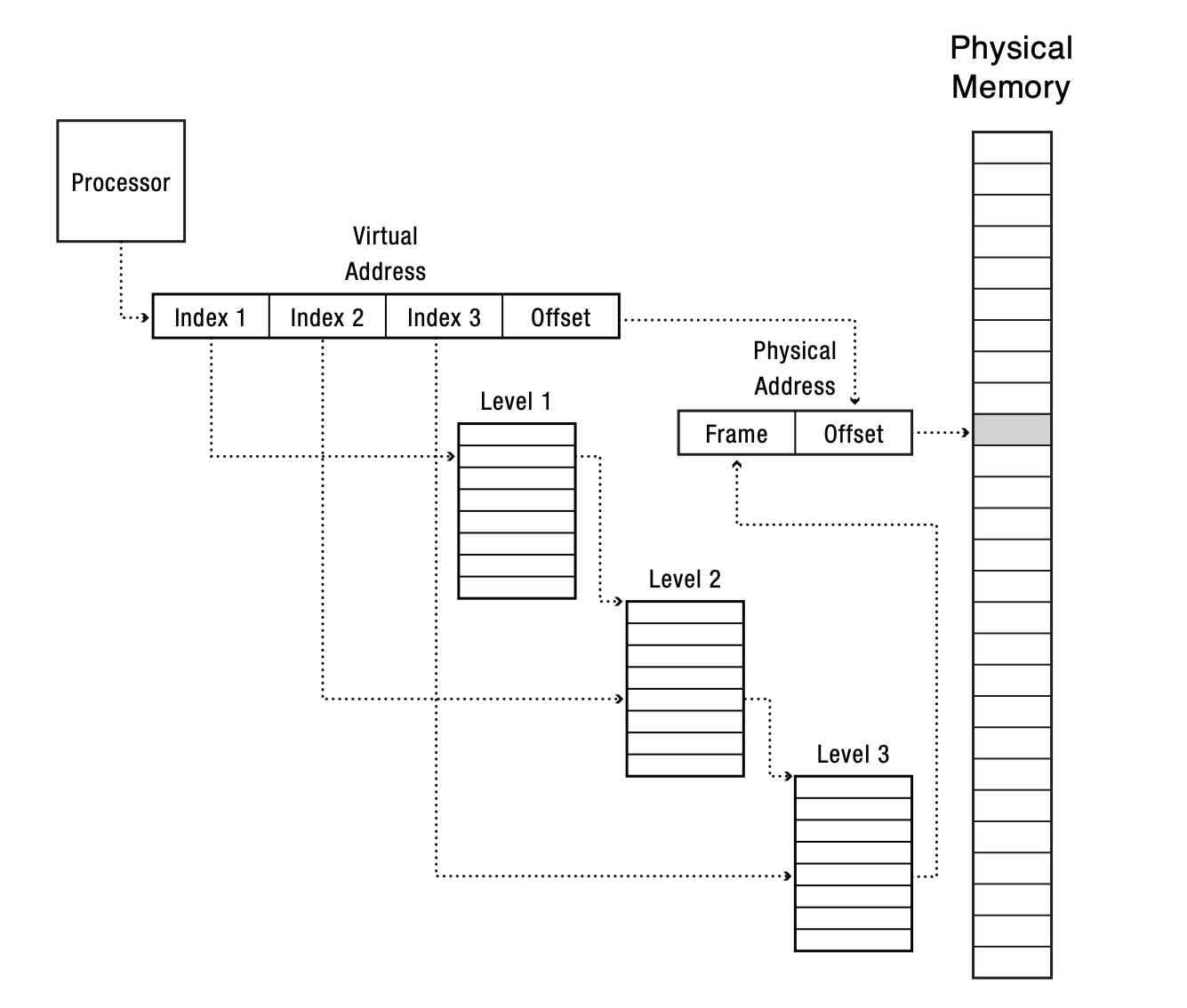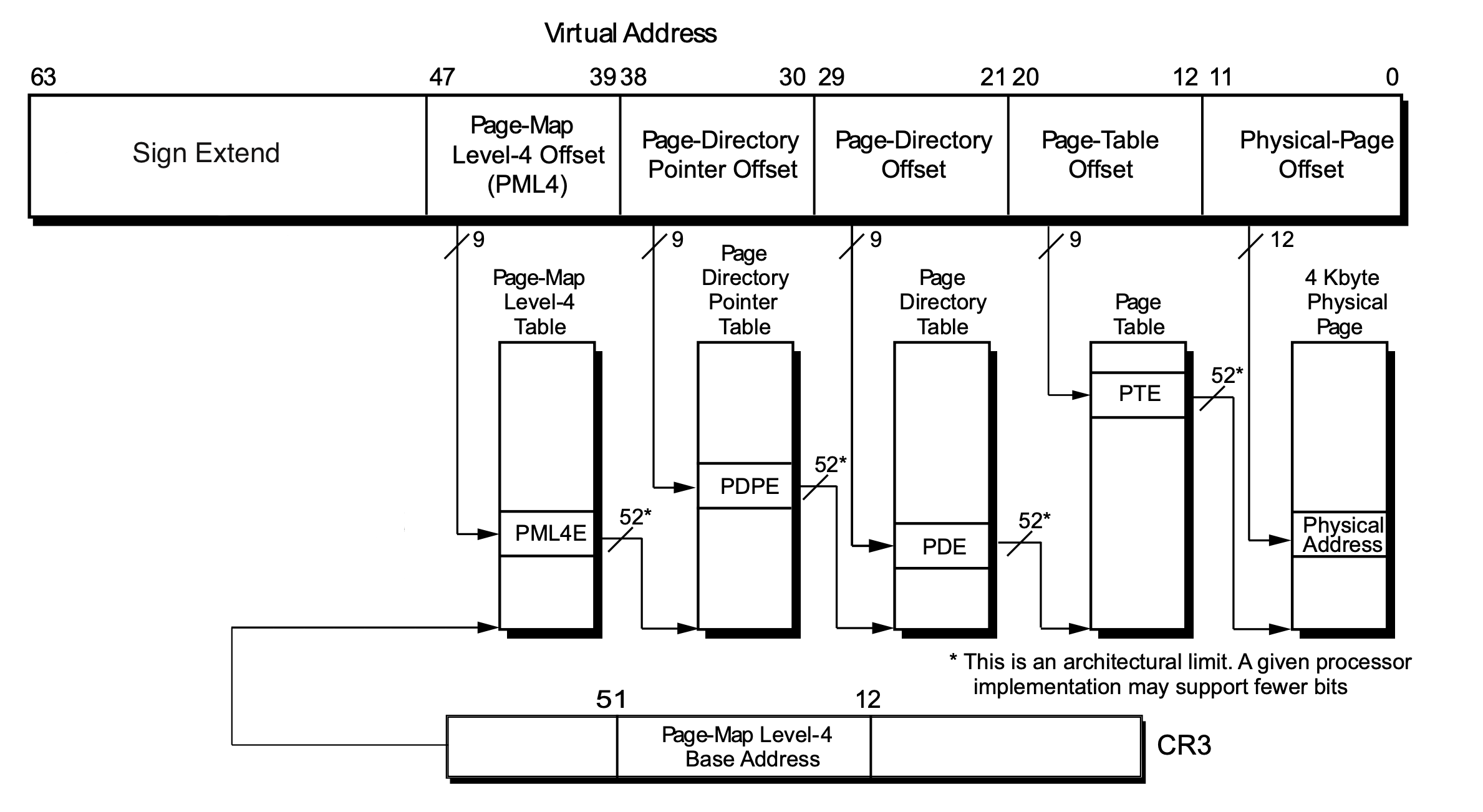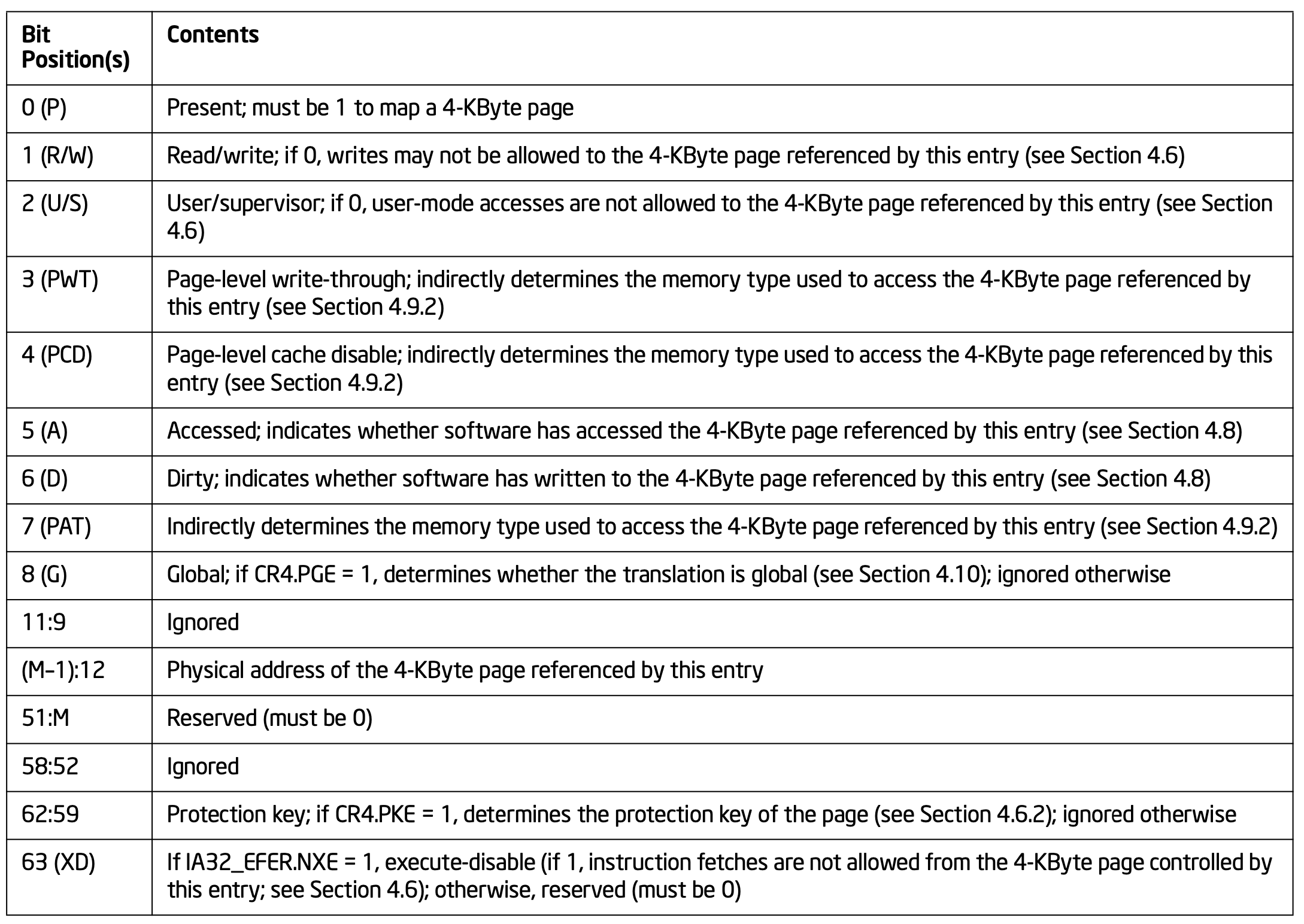Lecture: Address Translation & Paging
Physical Memory
- byte addressable (can refer to each byte in memory), limited size
- ~200 cycles access latency (as a reference, common instrs within 7 cycles)
- a process's code and data needs to be in memory to execute
Physical Memory Management
- another resource allocation problem: limited physical memory, multiple processes
- so how do we allocate memory?
- simple case: one process at a time
- give the entire physical memory to the process
- no translation needed, process's address = physical address
- pro vs cons?
- actual case: multiple processes
- attempt 1:
- if we know how much memory a process needs, we can just put processes's memory into disjoint sections of the physical memory
- do we need address translation now? how do we support fork?
- virtual memory: every process has their own view of memory
- virtual address vs physical address
- hw support: base and bound registers

- pos vs cons? What are the limitations?
- attempt 2:
- do programs need all of its memory at once?
- how can we make more efficient uses of physical memory?
- paging: divide process memory into fixed chunks, only keep ones needed in physical memory
Paging
- divide a process's memory into fixed sized pages (typically 4KB)
- only keeps pages we currently need in memory (what might that be?)
- dynamically load other pages into memory as needed it
- access to a page not in memory causes a page fault
Address Translation With Paging
- how would we implement this purely in software?
- divide up physical memory into page sized chunks
- each chunk of physical memory is called frame, page frame, or physical page
- track which page is mapped to which frame (physical memory)
- is this information per process or per entire system?
- what data structure can we use to store this info?
- what's the cost for accessing the data structure?
- where do we store the data structure?
- how many of these translation mappings would we need to store?
- on every memory access, transfers control to the kernel and asks the kernel to perform address translation
- how is it actually done?
- page table
- data structure for storing page to frame mappings
- single level

- multilevel

- indirection can help with space saving (when does it not?)
- how often do we need to perform address translation?
- how can we speed it up?
- cache the translation lookup! Translation Lookaside Buffer (TLB)
- upon a memory access, the hardware checks if the translation for the page is cached in the TLB
- if not, walk the page table to find the corresponding frame, and add that to the TLB

- have hardware perform the translation look up (page table walk)
x86-64 Address Translation
architecture specification defines format of the page table
x86-64 page table format
- 4 level page table
- PML4: Page Map Level 4, top level page table, each entry stores the address of a PDPT
- PDPT: Page Directory Pointer Table, 2nd level page table, each entry stores the address of a PDT
- PDT: Page Directory Table, 3rd level page table, each entry stores the address of a PT
- PT: Page Table, last level page table, each entry stores the address of the mapped frame

- each table is 4KB in size and each table entry is 8 bytes
- 4096 (table size) / 8 (entry size) = 512 (entries)
- each table is indexed with 9 bits of the virtual address
- what does the 8 byte page table entry look like?
- page table entry:

- Bit 0-11 contain information about the page (bit 0: present, 1: writable, 2: user accessible)
- Bit 12-47 contain the physical page number of the frame
- Bit 48-63 contain either reserved field or other permission info about the page (63: executable)

- why do we care about the format if hardware does the walk and permission checking?
- the kernel is responsible for setting up the page tables and filling out the entries
- the kernel can use these bits to make paging policy decisions
- eg. bit 5 indicates if the page has been accessed, 6 indicate if the page has been written to
Page Faults
- an exception that is raised by the hardware when something wrong happens in the page table walk
- could be missing the translation mapping or violating the access permission
- how does the kernel handle a page fault?
- identify and handle valid page faults
- stack or heap growth
- memory mapped files
- known permission mismatch
- memory pressure (access to swapped pages)
- terminate threads with invalid page faults
- nullptr, random address in unallocated virtual memory
- actual permission mismatch
- needs bookkeeping structures to track information (unrelated to address translation) about each page
- machine independent bookkeeping structures vs machine dependent page table
- machine independent structures in xk:
vspace, vregion, vpage_info
- track the size of each region (stack, heap, code), if a page is associated to any file, if a page is cow
- machine dependent structures in xk: the x86-64 page table
x86_64vm.c
- used for actual translation information
- you can update just vspace and generate a new machine depedent page table with
vspaceinvalidate
- last thing: how does the TLB interact with page fault handling
- if we change the permission of a page while handling page fault (eg. cow), is the cached result in TLB still valid?
- if we add a new mapping in page fault (stack growth), do we need to do anything to the TLB?






